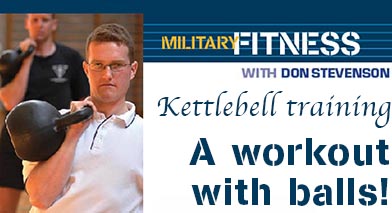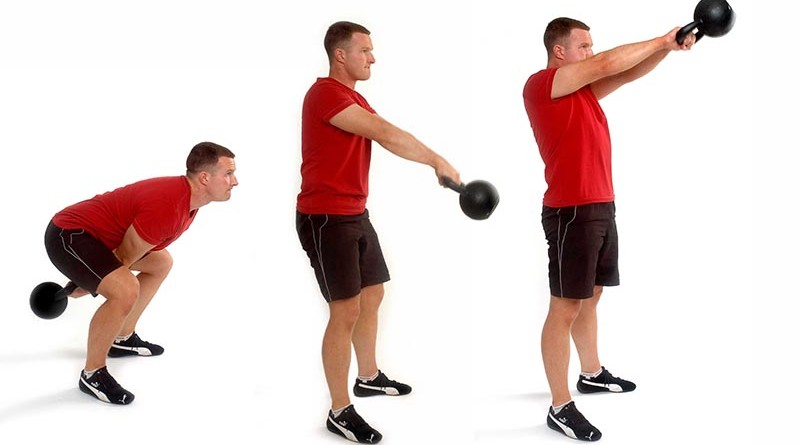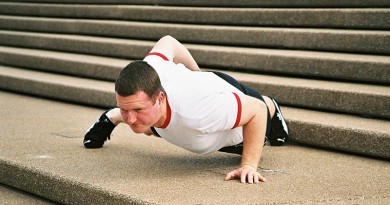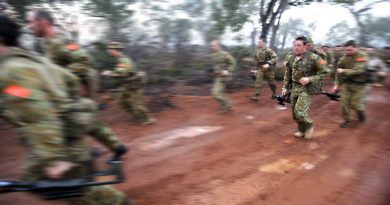Military Fitness – Part 3


Used in Russia by the military and elite athletes for over a hundred years, kettlebells have only recently been introduced to the modern western world. Now they are the fitness weapon of choice for many SWAT teams, military units and even the US Secret Service.
I described kettlebell training in Part I, but, as a quick review, kettlebell training uses a weight shaped like a cannonball with a handle on top to perform a variety of ballistic and strength exercises. It is one of the best ways for military personnel to get fit – but you’ve probably never heard of it until now! [at time of writing, March 2006].
Kettlebell training is often described with buzzwords and technical jargon such as “synaptic facilitation”, “hip flexor recruitment” and “core stabilisation” – but let’s get down to what kettlebell training is really all about.
It’s damn hard work
Running can be hard work. Pushups can be hard work too. But, until you’ve tried to do 100+ snatches with a heavy kettlebell, you haven’t really experienced how nasty exercise can be.
Your lungs are on fire, your forearms scream at you to stop, your legs start to shake uncontrollably and, for a few moments, you think you are about to die.
This is when you know you’ve done something worthwhile for your fitness.
Kettlebells toughen you up, and that’s really what military fitness is all about.
With kettlebells, you learn to absorb impact and deal with oddly shaped objects under conditions of fatigue.
There are no isolation moves in kettlebell training, so your entire body works hard.
Kettlebells are fun
This may sound contradictory to the point about them being hard work, but there’s nothing more satisfying in the world of fitness than throwing a big weight around.
But, instead of being stuck in a gym when the weather is nice, you can take your kettlebells outside and swing, snatch and throw them on a grassy field or in sand.
Once you master the basics, you can even learn to juggle them – and let me tell you, juggling a 24kg iron ball makes for one hell of a party trick.
Kettlebells also develop a grip of steel and lungs to match.
With the hundreds of kettlebell exercises available and ways to vary your training, it’s unlikely you’ll ever become bored with kettlebell training.
Kettlebells give you the flexibility to work on maximal strength, coordination and endurance, and once you master the basics you’ll find unlimited challenges to work on.
Convenience
Gym training is great and I firmly believe that everyone should be doing a basic program of squats, deadlifts, overhead pressing and the like with barbells and dumbbells.
The problem is that if you are deployed to some dustbowl in the Middle East, the nearest real gym could be a long way away, and carting around an arsenal of barbells, plates, benches and racks is a logistical challenging.
But, all you need is a single kettlebell and a place to do chin-ups and you can maintain a very high level of fitness.
To transport a kettlebell, just strap it into a vehicle – kettlebells are virtually indestructible and one or two per section is all you need.
Results, results, results
Everything I’ve just said would be irrelevant if it weren’t backed up by results.
Kettlebells deliver improved fitness for everyone from your grandmother to the guy trying out for Special Forces, and the benefits are more relevant to military personnel than to anyone else.
Kettlebells improve grip-strength, upper and lower body strength, flexibility, endurance and your ability to work hard, recover quickly and go again.
A number of the key kettlebell exercises are designed to strengthen your core, shoulders and lower back to prevent common military overuse injuries, because you don’t want to let your team down when
the going gets tough.
Jeff Martone, a senior instructor for a number of US military and law enforcement agencies, told me that after a program of kettlebell training, personnel were able to run faster, hit harder and shoot better under stress.
Sound like the sort of results you want out of a fitness program?
More info
Unfortunately I don’t have the space here to describe a full kettlebell routine or demonstrate all of the exercises. But in the next issue, I will outline some specific exercises.
.
.

.
.






